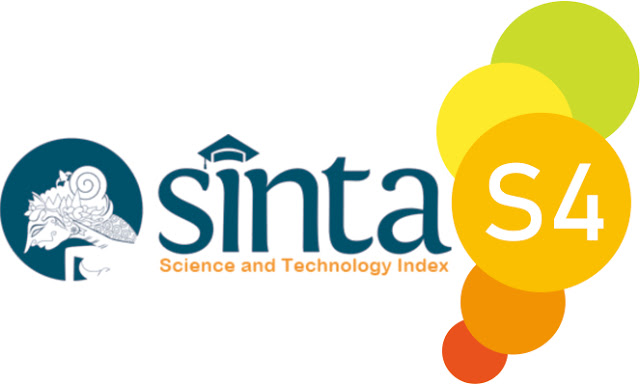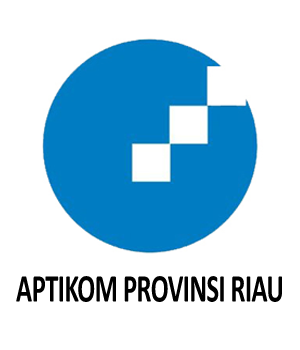Clustering Villages Based on Distance and Accessibility to Health Facilities Using the K-Means Method
Abstract
There are 47 very underdeveloped and 63 underdeveloped villages in Melawi regency. More than 50% of the villages have no health facilities, and the percentage of road lengths with good condition is only 20.53% in Melawi County. One of the most important factors influencing health problems is the physical aspect such as the availability of health facilities. In addition, the distance and easy access to health facilities also influence how quickly people are treated and vaccinated during the Covid 19 pandemic. The objective of this study is to determine the degree of accessibility of health facilities in villages by forming village clusters that are likely to be important to the government in ensuring treatment and distribution of Covid 19 vaccine. The clustering method used is the K-Means method with Euclidean spacing to calculate the spacing of the data and the Elbow method to determine the optimal number of clusters on the data, and the Silhouette coefficient evaluation method to test the degree of accuracy of the model created with K-Means. The results of the Elbow method showed the optimal number of clusters to be 2 clusters. Based on the results of the K-Means algorithm process, the clusters that have a larger average distance and access is rated as difficult are cluster 1 with 92 villages in it, and cluster 1 has a smaller average distance and access is relatively easy with 77 villages in it. The result of the evaluation with the silhouette coefficient is 0.299.
Downloads
References
D. R. S. Mayangsari, S. Solikhun, and I. Irawan, “Pengelompokkan Jumlah Desa/Kelurahan Yang Memiliki Sarana Kesehatan Menurut Provinsi Dengan Menggunakan Metode K-Means Cluster,” KOMIK (Konferensi Nas. Teknol. Inf. dan Komputer), vol. 3, no. 1, pp. 370–377, 2019, doi: 10.30865/komik.v3i1.1615.
P. Geldsetzer et al., “Mapping physical access to health care for older adults in sub-Saharan Africa and implications for the COVID-19 response: a cross-sectional analysis,” Lancet Heal. Longev., vol. 1, no. 1, pp. e32–e42, 2020, doi: 10.1016/S2666-7568(20)30010-6.
B. P. S. Kapupaten Melawi, “Kapupaten Melawi Dalam Angka 2021,” BPS Kabupaten Melawi, Kapupaten Melawi, pp. 1–287, 2021.
H. Murfi, N. Rosaline, and N. Hariadi, “Deep autoencoder-based fuzzy c-means for topic detection,” Array, vol. 13, no. August 2021, p. 100124, 2022, doi: 10.1016/j.array.2021.100124.
C. Virmani, A. Pillai, and D. Juneja, “Clustering in aggregated user profiles across multiple social networks,” Int. J. Electr. Comput. Eng., vol. 7, no. 6, pp. 3692–3699, 2017, doi: 10.11591/ijece.v7i6.pp3692-3699.
A. N. Ulfah and S. ’Uyun, “Analisis Kinerja Algoritma Fuzzy C-Means Dan K-Means Pada Data Kemiskinann,” J. Jatisi, vol. 1, no. 2, pp. 139–148, 2015.
A. K. Dubey, U. Gupta, and S. Jain, “Comparative study of K-means and fuzzy C-means algorithms on the breast cancer data,” Int. J. Adv. Sci. Eng. Inf. Technol., vol. 8, no. 1, pp. 18–29, 2018, doi: 10.18517/ijaseit.8.1.3490.
K. R. Nirmal and K. V. V. Satyanarayana, “Issues of K means clustering while migrating to map reduce paradigm with big data: A survey,” Int. J. Electr. Comput. Eng., vol. 6, no. 6, pp. 3047–3051, 2016, doi: 10.11591/ijece.v6i6.11207.
C. Pete et al., “Crisp-Dm 1.0,” Cris. Consort., p. 76, 2000.
K. Rahayu, L. Novianti, and M. Kusnandar, “Implementation Data Mining with K-Means Algorithm for Clustering Distribution Rabies Case Area in Palembang City,” J. Phys. Conf. Ser., vol. 1500, no. 1, 2020, doi: 10.1088/1742-6596/1500/1/012121.
F. Schäfer, C. Zeiselmair, and J. Becker, “2020 IEEE International Conference on Technology Management, Operations and Decisions, ICTMOD 2020,” 2020 IEEE Int. Conf. Technol. Manag. Oper. Decis. ICTMOD 2020, pp. 190–195, 2020.
J. Han, M. Kamber, and J. Pei, Data Mining: Concepts and Techniques. 2012.
V. Kotu and B. Deshpande, Data Science: Concept and Pactice, Second Edi. 50 Hampshire Street, 5th Floor, Cambridge, MA 02139, United States: Jonathan Simpson, 2019.
F. Mar’i and A. A. Supianto, “Clustering Credit Card Holder Berdasarkan Pembayaran Tagihan Menggunakan Improved K-Means dengan Particle Swarm Optimization,” J. Teknol. Inf. dan Ilmu Komput., vol. 5, no. 6, p. 737, 2018, doi: 10.25126/jtiik.201856858.
M. A. Syakur, B. K. Khotimah, E. M. S. Rochman, and B. D. Satoto, “Integration K-Means Clustering Method and Elbow Method for Identification of the Best Customer Profile Cluster,” IOP Conf. Ser. Mater. Sci. Eng., vol. 336, no. 1, 2018, doi: 10.1088/1757-899X/336/1/012017.
E. Patel and D. S. Kushwaha, “Clustering Cloud Workloads: K-Means vs Gaussian Mixture Model,” Procedia Comput. Sci., vol. 171, no. 2019, pp. 158–167, 2020, doi: 10.1016/j.procs.2020.04.017.
M. Nishom, “Perbandingan Akurasi Euclidean Distance, Minkowski Distance, dan Manhattan Distance pada Algoritma K-Means Clustering berbasis Chi-Square,” J. Inform. J. Pengemb. IT, vol. 4, no. 1, pp. 20–24, 2019, doi: 10.30591/jpit.v4i1.1253.
Y. A. Auliya, W. F. Mahmudy, and Sudarto, “Land Clustering for Potato Plants Using Hybrid Particle Swarm Optimization and K-Means Improved by Random Injectio,” J. Inf. Technol. Comput. Sci., vol. 4, no. 1, pp. 42–56, 2019, doi: 10.1109/ICOMITEE.2019.8921207.
S. Monalisa, “Klusterisasi Customer Lifetime Value dengan Model LRFM menggunakan Algoritma K-Means,” J. Teknol. Inf. dan Ilmu Komput., vol. 5, no. 2, p. 247, 2018, doi: 10.25126/jtiik.201852690.
Copyright (c) 2022 Noviandi Noviandi, Stefanny Amalia Noviantika, Bambang Irawan

This work is licensed under a Creative Commons Attribution-ShareAlike 4.0 International License.
This is an open-access article distributed under the terms of the Creative Commons Attribution-ShareAlike 4.0 International License which permits unrestricted use, distribution, and reproduction in any medium. Users are allowed to read, download, copy, distribute, search, or link to full-text articles in this journal without asking by giving appropriate credit, provide a link to the license, and indicate if changes were made. All of the remix, transform, or build upon the material must distribute the contributions under the same license as the original.















